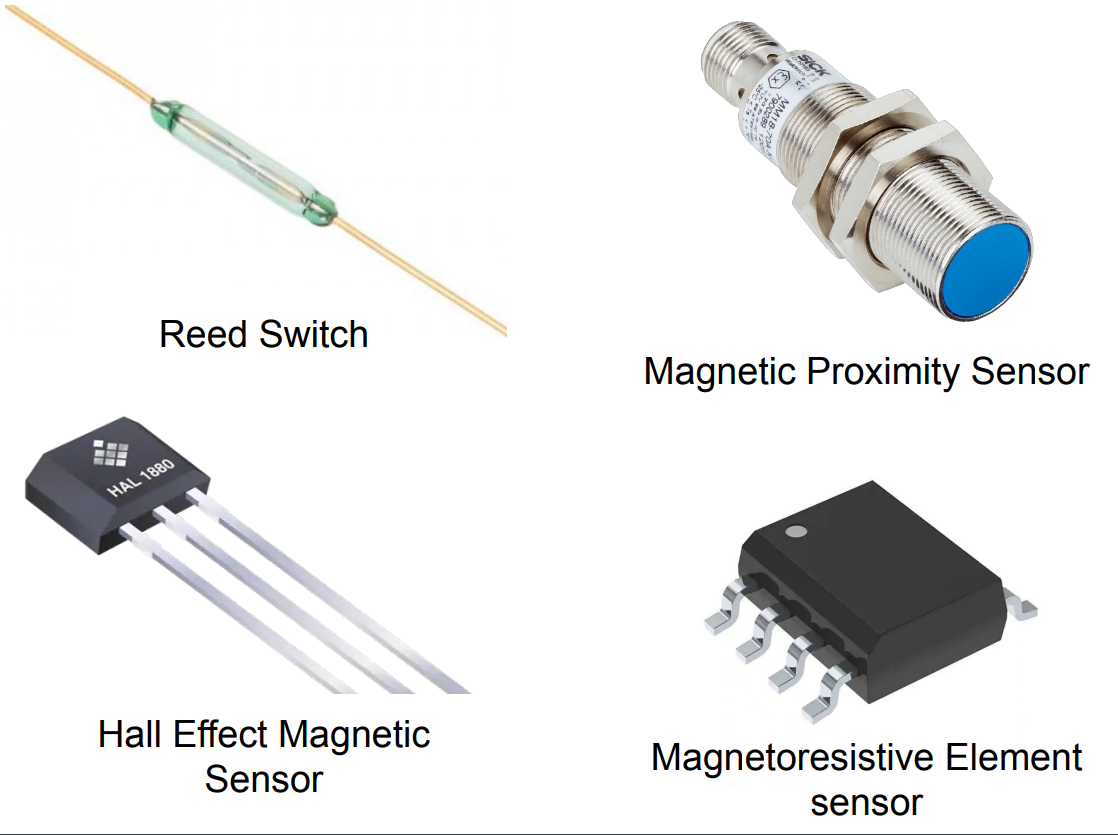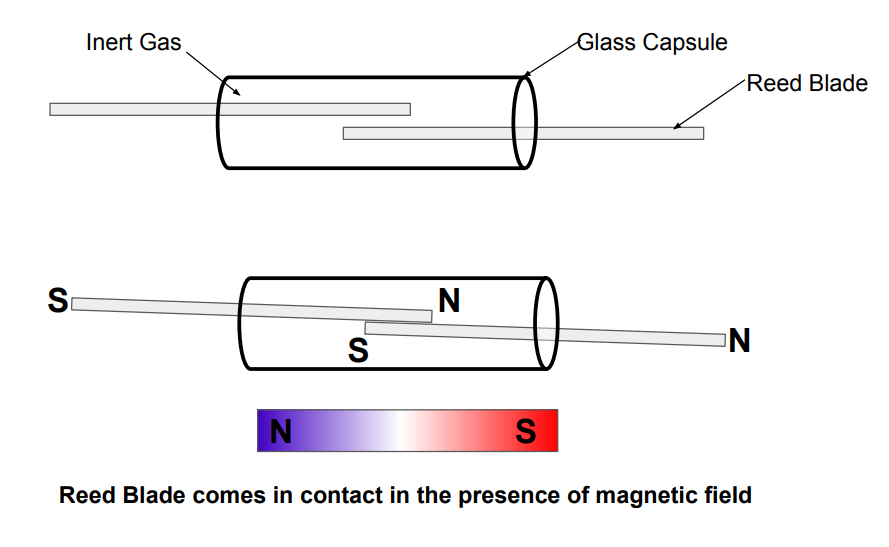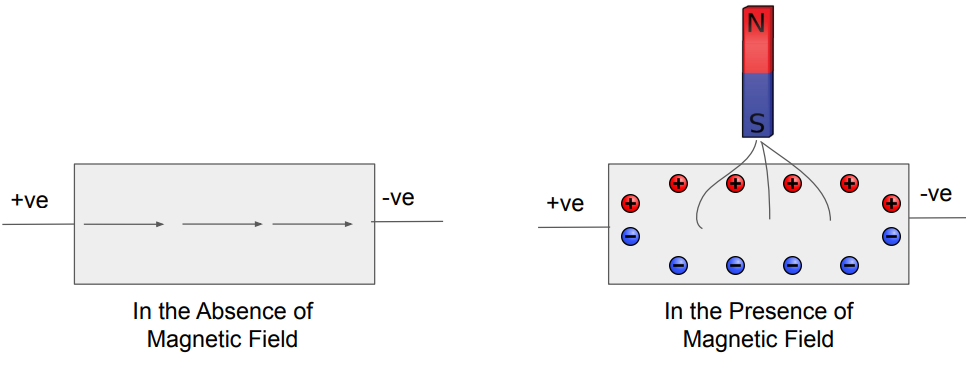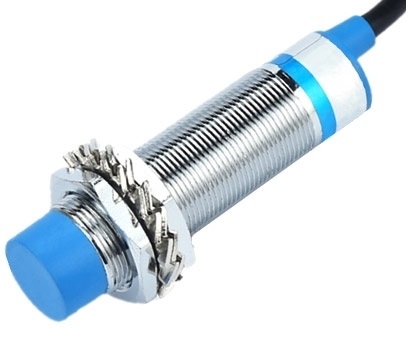What is a Magnetic Sensor?
A magnetic sensor is a sensor that detects magnetism and convert the magnetic field into an electrical signal.
These sensors have several applications in home & industrial automation, automotive industry, robotics, defense equipment, etc. Reed switch, hall effect sensor, and proximity sensors are examples of magnetic sensors.

In this article, we will discuss different types of magnetic sensor, their working, and their applications.
Types of Magnetic Sensor
The following types of magnetic sensors have applications in the automation, automotive, and electronics industries.
- Reed Switch
- Hall Effect Sensor
- Magneto-resistive Magnetic Sensor
- Magnetic Proximity Sensor

A Reed switch is a type of magnetic sensor that detects the presence of the magnetic field. It consists of two reed blades hermetically sealed inside a glass capsule with electrical leads coming out of each end. Click this link to know in detail about the reed sensor.

A Hall Effect Sensor is a type of solid-state magnetic sensor that can detect the presence and magnitude of the magnetic field. Hall sensor output voltage is directly proportional to the strength of the magnetic field.
Magnetoresistive magnetic sensor utilizes Magnetoresistive element to detect the presence of magnetic field. They are completely different from the hall sensor. Hall sensor generates voltage, whereas Magnetorresistive sensor resistance changes in the presence of magnetic field.

An inductive sensor creates a symmetrical, oscillating magnetic field close to the sensing surface. The presence of the metallic object near the sensing area causes a change in the magnetic field. An inductive proximity sensor can detect any change in sensor magnetic field.
Reed Switch vs Hall Sensor vs Magnetoresistive Sensors
| Parameter | Reed Switch | Hall Sensor | Magnetoresistive Sensor |
|---|---|---|---|
| Working | Reed blades comes in contact in the presence of magnetic field | Generate voltage in the presence of magnetic field | Change in resistance in the magnetic field |
| Power Consuption | Zero Power consuption in passive state | Consumes continuous power. | Consumes almost zero power. |
| Solution Cost | Low | Moderate | Comparitively High |
| Output | Presence or Absensce | Magnetic field strength perpendicular to it. | Angle of the Magnetic field parallel to it. |
| Sensor Size | Comparitively Large | Moderate | Small |
| Reliability in Harsh Conditions | Very High | Low | Moderate |
| ESD Protection | Not Required | Required | |
| Life | Billion of Cycles | ~ 500 million | - |
| Switching Frequency Range | 500 Hz | 1 KHz | 1 Mhz |
Advantages and Limitations of Magnetic Sensors
Advantages
Here is the list of advantages of magnetic sensors:
- No moving parts.
- Ability to detect magnetic parts through plastics, walls, and non-magnetic materials.
- Robust design
- Low Cost
- Small Size
Limitations
Here is the list of limitations of magnetic sensors:
- Has limitations while using sensors with ferrous materials.
- Can not use in high temperature environment.
- Limited detection range.
Applications of Magnetic Sensors
Magnetic sensors have applications in measuring proximity, position, and displacement from a magnetic object. They have several applications in various industries.
- Automobile and Automotives: To determine the position of brake, steering, gear, etc, and give inputs to automobile ECU.
- Industrial Automation: Detecting valve position, door position, fluid level, tool position, etc.
- Robotics: Determining the position of various components of a robot with respect to each other.
- Security System: Used in door or window sensors to detect if they are open.
- Military: Weapon detection
- Home Appliances: Determine microwave, washing machine, and fridge door positions for safe operation.
The list of magnetic sensor applications can be infinite. They can be used anywhere you want to find proximity, position, and displacement.
We will keep adding more information on different types of magnetic sensors and their applications. Please add your suggestions, comments, or questions in the comment box.

Add a Comment